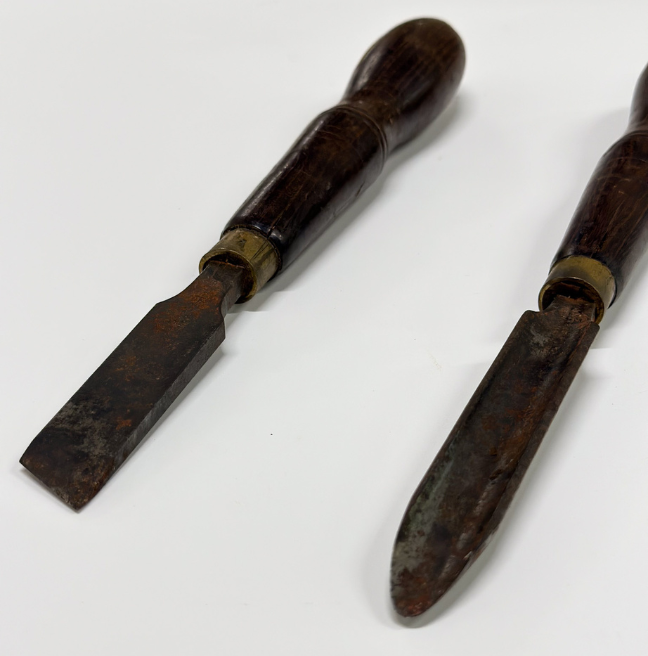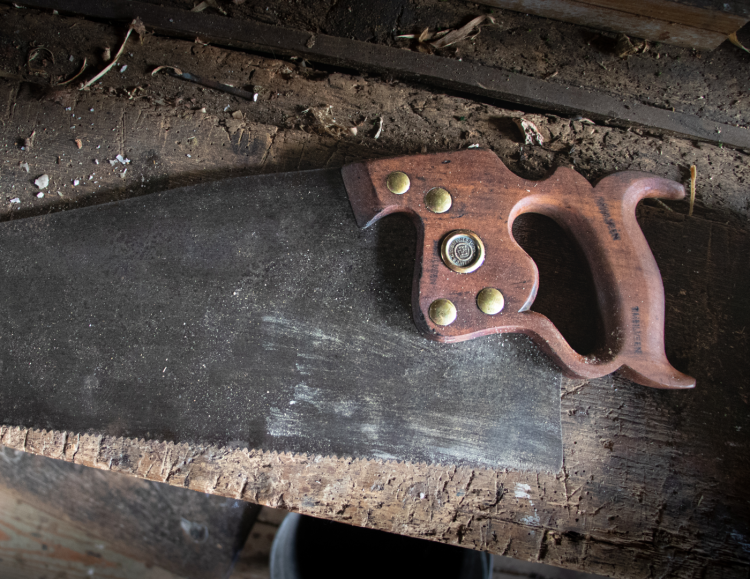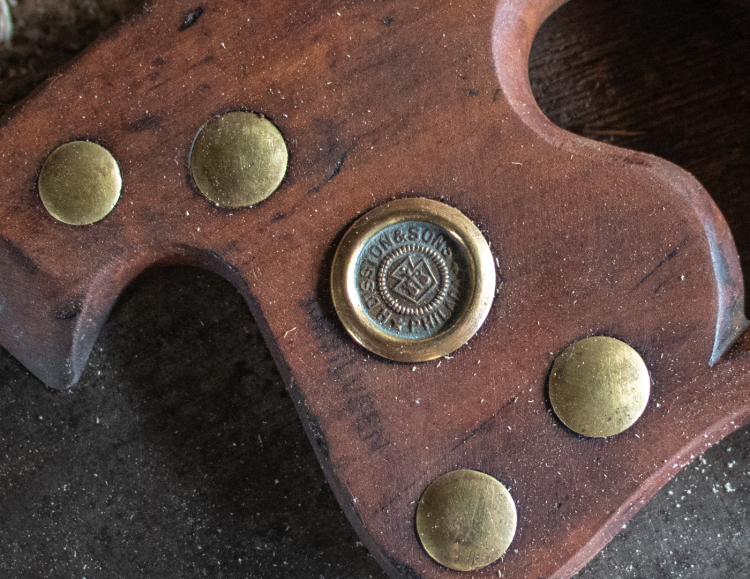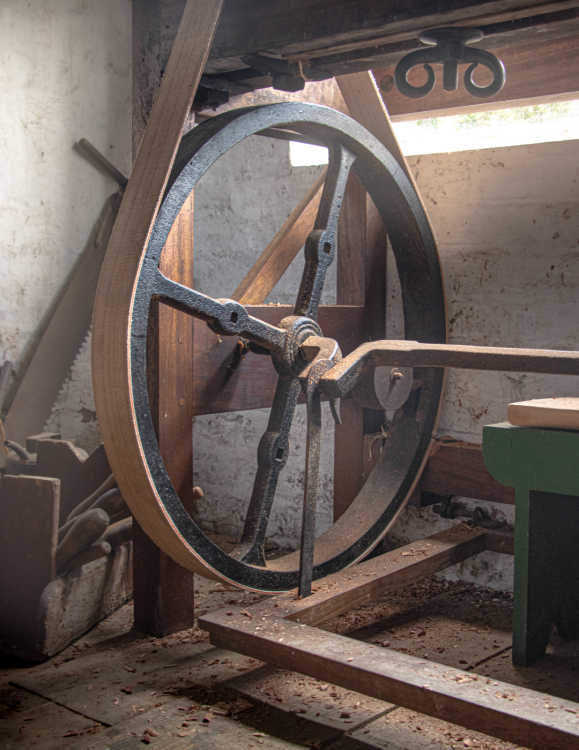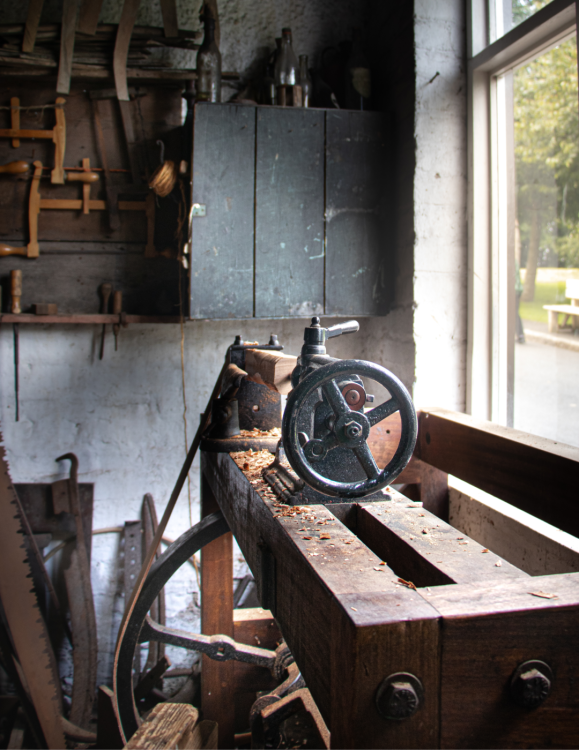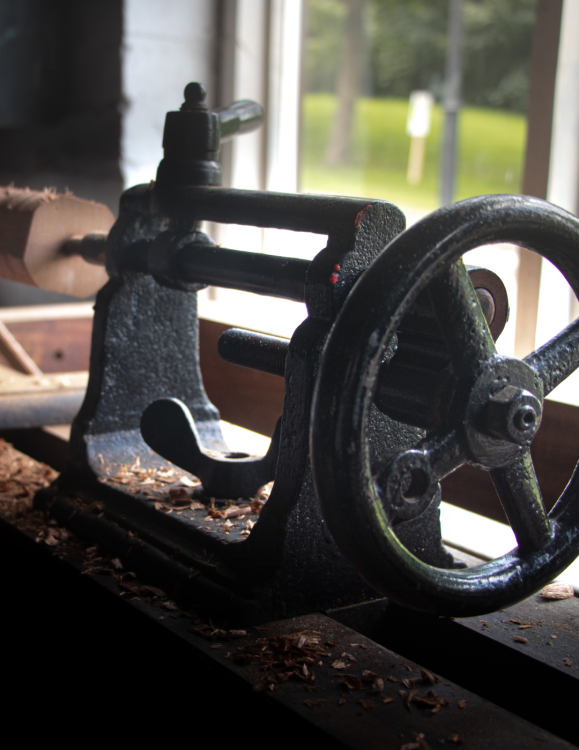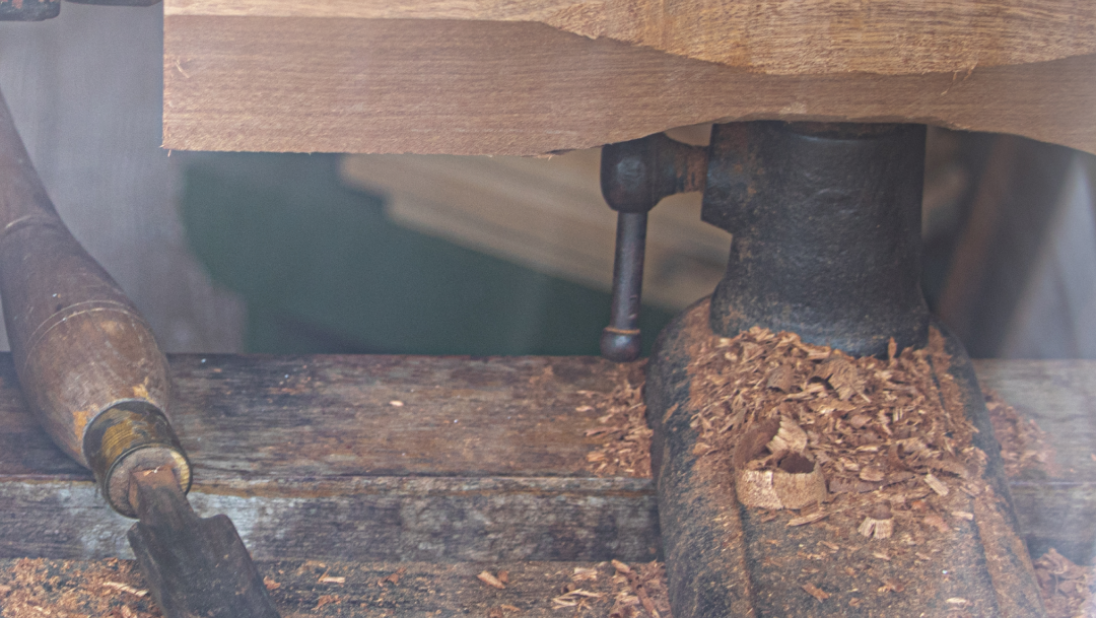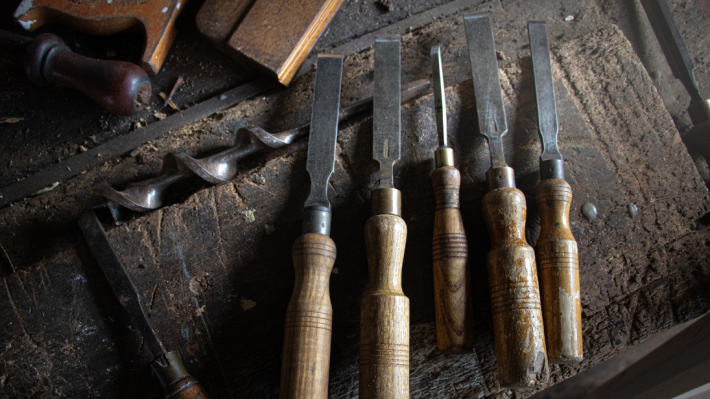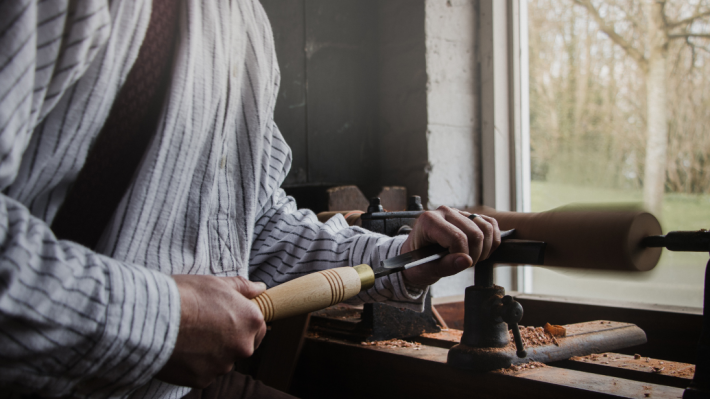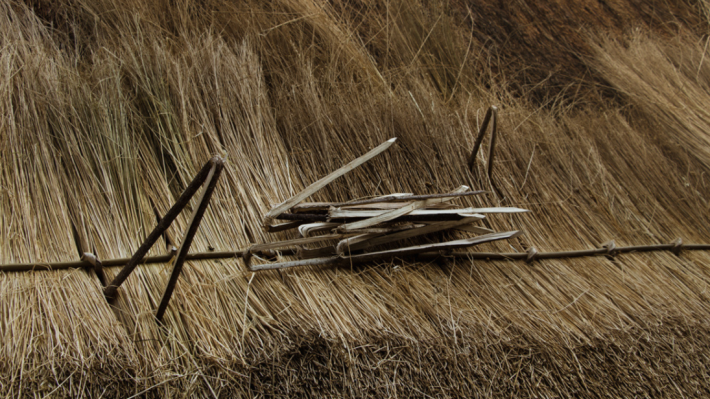
Where is it from?
This building was constructed in the 1830s and came from Rowland Street, Belfast. Although the entrance to the carpenter’s shop is part of Meeting Street here at the museum, the building is actually part of the Tea lane (Rowland Street) terrace of houses.
It was later dismantled and moved to the Folk Museum in 1978.
The carpenter’s workshop is placed in the roofed-over back yard of the end-terrace house in Tea Lane. Roofing over a back yard of terrace house to provide sheltered working space was very common in towns all over Ulster in the late 1800s and early 1900s.
Why is it special?
Gillespie's workshop demonstrates the environment and activities of a local carpentry business in the early 1900s. During the 1900s, the the end-terrace house and yard were rented by a carpenter called George Gillespie. It is his name that now appears over the entrance to the carpenter’s workshop.
The workshop is fitted out with authentic tools and furnishings. The tools were acquired by the Museum from three main sources;
- a house repair joiner who lived in Killylea, County. Armagh
- a barrow maker who resided in Loughbrickland, County Down
- a potato and fruit-box maker, County Antrim.

Work at Gillespie's
The working exhibit is a representation of a typical woodwork shop of the early 1900s. It would almost certainly have been a one man operation.
A wide variety of woodwork was carried out in this kind of workshop. This would include the repair and maintenance of horse-drawn vehicles and domestic furniture. During periods when business was slack the carpenter would turn his hand to the creation of sundry wooden items to order or for sale.
Tools of the Trade
Foot-Powered Lathe
When passing by Gillespie's, through the front window you'll often see our carpenter busy turning wood on the foot-powered lathe.

Foot-Powered Lathe
Our foot-powered lathe is at least 200 years old. The first known owner was a man called Bullock, a weaver's shuttle maker in Donaghadee, County Down. In the 1830s, he hired an apprentice called James Newell. Newell eventually came into possession of the lathe, and affixed a stamp bearing his name, and the date 1857.
The lathe then passed onto Newell's daughter; then to a Newtownards weaver, William Harvey, who used it to make a variety of things including boxwood hoops; and then, to a timber merchant, Sam Clarke, also of Newtownards.
In 2019, the lathe was donated to the Ulster Folk Museum by Jim Clarke, the grandson of Sam Clarke. Today, the lathe is used by our carpenter demonstrator, Peter Sloan, to preserve the skillsets with which the lathe's previous owners expressed their craftsmanship, and moreover, relied on for their livelihoods.

When visiting Gillespie's, make sure to ask our carpenter if you can see the lathe in action. You'll be able to observe the same device operating with which James Newell acquired a national reputation for "being able to turn anything, from a drumstick to a weaver's loom" (The Spectator, October, 1959).
According to the donor, Jim Clarke, the wood on the lathe was replaced as the original timber was made of beech which was infested with woodworm. It was made exactly to the same dimensions and method of construction using a hardwood.
An article in the Spectator tracing the lathe's lineage was published 1959, the year before Jim was born. His grandfather taught him how to use the lathe as a young lad and he fondly recounted many hours making all sorts of things on it using old scraps of timber from the workshop.
You might also like
Carpentry
Learn about the heritage skill of carpentry through the objects and stories of the Ulster Folk Museum.
An Island of Skills
Learn about some of the heritage skills and crafts we'll be showcasing during August Craft Month.
Thatching
Learn about the heritage skill of thatching.
